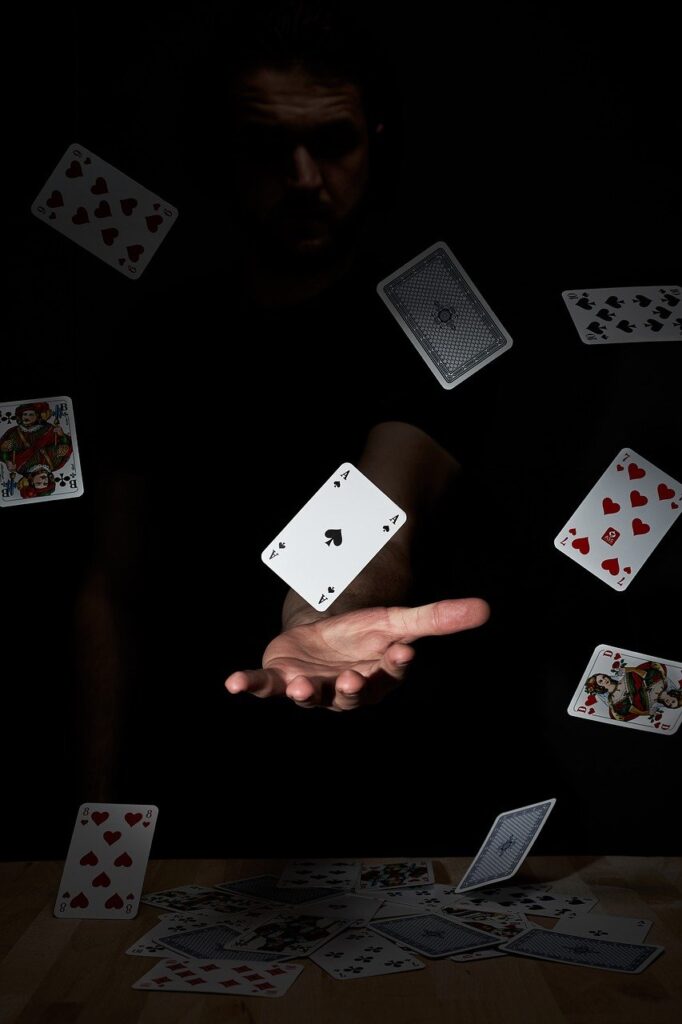It was the first week of January when everyone had been to their home town and they were meeting a after a gap of 2 weeks. Padma wanted to speak first before any one and burst out saying “I think I know how Bridge evolved in India”. Prabha, Kaushik and Kingo were eager to hear but they had their own findings on how it evolved in India. Ultimately, the four of them decided to do a white paper on trick taking games in India and compare them with today’s modern game of Bridge.
532 – A game played with 30 cards amongst 3 players. The dealer had to make 2 tricks, next person fixed the trump and had to make 5 tricks and the third person had to make 3 tricks. It had concepts of trump, tricks and ruffing but no bidding as your goal was determined by the position of your seat.
If you made extra tricks that what was assigned, you get a positive score, if you make under tricks, you get negative score and if you make exact number of tricks assigned to you, you get no score. No concept of bonus points even if you make all the tricks. The person who scores maximum points over number of deals played is the winner
78 – A game played with 30 cards between 2 players but with 5 cards in each hand. The balance 20 cards were kept in pairs of one card face up and one card face down. There were thus 5 such pairs with each player. You can use the cards which are in your hand or the face-up cards. Face down cards can be used only after the face-up card on top of it was played.
Thus it had basic concepts of tricks, trumps and dummy but no bidding whatsoever as dealer had to make 7 tricks while the other person had to make 8 tricks. Scoring similar to 532
304 – For reasons which are not very clear, but the hierarchy of cards changed with Jack as the highest card (30 points), 9 (20), A (11), 10(10),K(3) and Q(2) totalling 304 points. Bidding started from 160 points (mid-point in multiples of 10) but trump was not announced till bidding was completed. It had some unique variations to current day bridge
- if you pass you cannot bid a second time
- You get a discount of 40 /20 points for marriage (KQ) of trump suit/other suit. If you have marriage your contract value is discounted by the points given to the marriage.
Another interesting feature was that when you are dealt 4 cards (half the total cards), you can bid half-court and you get points if you score all 4 tricks and the same concept is extended if you bid 304 with all 8 cards and make all 8 tricks.
This game introduced the concept of bidding though there was no partnership bidding and no concept of bonus or doubling contracts. It was a partnership game and you could choose a partner holding a particular card. The game was not won by the number of tricks but by counting the face value of cards won by each side.
28/56 –The card hierarchy remained the same as 304 but the values changed – J(3), 9 (2), A(1), 10(1) but A was higher value than 10. While 28 was played with 4 players with 32 cards, 56 was played with 48/64 cards with 2 packs of cards and 6/8 players. It had bidding starting from mid-point and bidding used to state goal of points and trump. The highest bidder won the contract. This game is said to have evolved from 304
Since there can be two cards of equal denomination in 56 when two packs are used, the one who played the card first will win the trick. You have to count the face value of the cards in tricks won by your side to determine if you side won the deal.. This game introduced the concept of bonus as shown below
| Bid | Bidding team wins | Bidding team loses |
| 28 to 39 | receive 1 table | pay 2 tables |
| 40 to 47 | receive 2 tables | pay 3 tables |
| 48 to 55 | receive 3 tables | pay 4 tables |
| 56 | receive 4 tables | pay 5 tables |
It also introduced the concept and of double and redouble. However, it did not have the concept of a dummy. It was a tradition in Kerala, where this game became very popular, that the losing side has to hang cards on their ears so that all kibitzers can see which side is losing
The key points to note in the above analysis are listed below:
- Trick Taking games were mainly called by numbers – number of tricks or total points
- It evolved in stages from fixed positional target to bidding
- All concepts of Bridge evolved over a period of time
Tailpiece: Goofy was intently listening and could not hold back and barked “Do you know how Dogs evolved”. I scratched my head and said “Maybe from Wolves”. Goofy nodded in affirmation and said I hope you know, Devil, Phantom’s pet wolf was always mistaken as a dog

